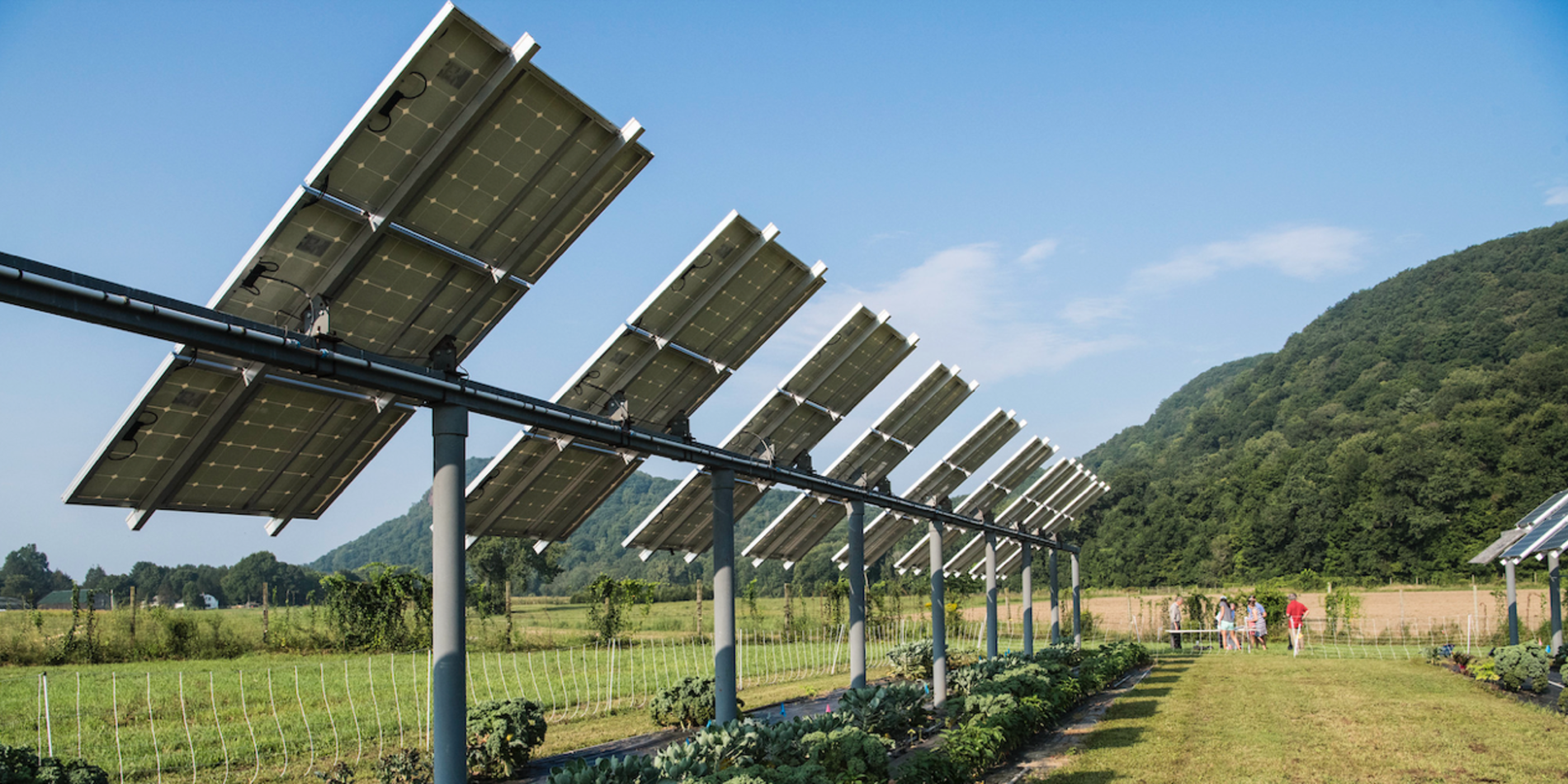TomKat, Precourt, and GCEP award $2 million for new energy research in 2018
Stanford University’s Precourt Institute for Energy, TomKat Center for Sustainable Energy and Global Climate & Energy Project funded 17 new, early-stage energy research projects on campus for a total of $2 million this fall. The competitively awarded seed grants enable Stanford researchers to experiment and demonstrate the feasibility of creative approaches that might substantially improve energy supply and use.
Seven of the faculty members receiving funding are applying their expertise to energy research for the first time. Precourt and TomKat, which in addition to funding individual professors encourage professors from different departments to team up on a project, have made such awards annually since 2010. This year marks the final research projects to be funded by GCEP, a $200-million project that began funding research in 2003.
TomKat Center for Sustainable Energy
Using DNA fingerprints of subsurface microbes to characterize geothermal reservoirs
Principal Investigators (PIs): Anne Dekas, Earth System Science; Roland Horne, Energy Resources Engineering
These researchers will explore the DNA fingerprints of the microbial community of a geothermal reservoir, a technology that has become economical only recently. The work could greatly improve the resolution of reservoir characterization, fracture simulation research, and performance of conventional geothermal reservoirs and enhanced geothermal systems.
Solid base catalysis of hydrocarbon functionalization for sustainable chemical synthesis
PI: Matthew Kanan, Chemistry
Reducing the climate impact of the global chemical industry will require renewable, non-fossil fuel feedstocks. This project will investigate a new concept for the catalytic insertion of CO2 into hydrocarbon C–H bonds to form carboxylic acids and their derivatives. To date, the reaction has required excess amounts of extremely resource-intensive reagents. Here, the use of porous solid-base materials may eliminate other reagents and generate no waste byproducts.
Continuously cycled water harvesting system from the atmosphere
PIs: Kenneth Goodson and Juan Santiago, Mechanical Engineering
Harvesting water from the atmosphere could become a large source of fresh water, but current technologies use a lot of energy and require high humidity. The researchers will couple absorbent surface layers, solar heating, heat exchangers and capillary forces. They hope to increase water capture rate by more than 10 times.
Precourt Institute for Energy
Enhancing bioethanol production through a new genetic and molecular engineering strategy
PIs: Lynette Cegelski, Chemistry; José Dinneny, Biology
Cegelski and her students have discovered a modified, more easily digestible cellulose in bacteria and the genes responsible for the modification. By engineering plants to introduce the modification into cellulose, Cegelski and Dinneny hope to make it easier to break cellulose down to its individual sugars during the biofuels production process.
High temperature metal-air batteries based on oxide ion transport
PI: William Chueh, Materials Science & Engineering
This research is aimed at obtaining a battery with high energy density and low cost for transportation. The team will focus on the use of a high temperature, solid oxide fuel cell-type framework with liquid metal as the anode and oxygen ions as the charge carrier, rather than metal cations.
Phase behavior of CO2/H2O-mixtures in nanoconfinements
PIs: Matthias Ihme, Mechanical Engineering; Dimosthenis Sokaras, SLAC
In North America, the estimates for available carbon dioxide sequestration capacity range from 2,600 gigatons to 22,000 Gt, and estimates in other countries are just as variable. In this project the scientists hope to gain a fundamental understanding of nanoconfined phase-changes and to improve models to predict sequestration capacities accurately.
Assessing the energy, environmental and human impacts of redeveloping slums in Mumbai
PIs: Rishee Jain, Civil & Environmental Engineering; Ronita Bardhan, Centre for Urban Science & Engineering, Indian Institute of Technology Bombay
Redevelopment of informal settlements in India do not consider implications on energy efficiency and the ability to integrate renewable energy. One proposed redevelopment would dramatically increase indoor temperatures, promoting greater use of expensive air conditioning. This venture will develop a data-driven simulation toolkit for assessing energy efficiency, renewable energy potential and human burdens of slum redevelopment strategies.
Transportation electrification through ubiquitous wireless charging
PIs: Juan Rivas-Davila and Jonathan Fan, Electrical Engineering
Wireless power transfer for electrical vehicles could reduce the size of EV batteries and eventually electrify roadways broadly, eliminating most centralized charging. The researchers expect to advance wireless power transfer systems through wide bandgap materials, circuit techniques, and coil design. Simple loops of wire would eliminate the need for magnetic materials and reduce the cost of the infrastructure.
Radiation-actuated electron spectroscopic imaging of single molecules on catalytic surfaces
PI: Arun Majumdar, Mechanical Engineering
Using new techniques capable of high lateral and spatial resolution, and surface sensitivity, this project aims to measure atomic level changes in materials and gain insight into catalytic reactions. The ability to identify single molecules on catalyst surfaces could give insight into chemical bond formation and cleavage important to advancing numerous energy applications.
Global Climate & Energy Project
Low-temperature selective conversion of biomass-derived compounds to fuels and chemicals
PI: Matteo Cargnello, Chemical Engineering
This work aims to advance energy efficient and low-cost biomass conversion, creating a low-carbon or carbon-neutral process for chemicals and liquid fuels. Specifically, it will systematically vary the structure, porosity and morphology of relevant catalysts for such conversion to influence activity and selectivity. Cargnello’s group hopes to learn how to control selectivity at low-temperature.
Selective electrochemical ammonia production via electron-limiting catalytic devices
PIs: Stacey Bent, Chemical Engineering; Bruce Clemens, Materials Science & Engineering
This project will explore a method, as an alternative to the well-established yet energy intensive Haber-Bosch process, to make ammonia. If the strategy is successful it will be a significant achievement. Few alternatives to the Haber-Bosch process are scalable and less energy intensive.
Accelerating scaling to rapid open-air fabrication of robust perovskite solar modules
PI: Reinhold Dauskardt, Materials Science & Engineering
This project explores a unique approach for the manufacture of perovskites for solar cells. The research will illuminate the effect of process conditions on the properties of the deposited films. If successful, this would lead to an important roll-to-roll process for deposition of various metal oxides for both photovoltaic and lighting applications.
Simultaneous energy harvesting from the hot sun and the cold universe
PI: Shanhui Fan, Electrical Engineering
Fan’s group aims to achieve energy harvesting simultaneously and synergistically from the sun and outer space. The approach takes advantage of the different wavelength ranges occupied by solar radiation from the sun and thermal radiation of an object on earth. Combined heating and radiative cooling in the same area could have large-scale practical application.
Leave it in the ground: Reviving abandoned oil wells for heat and electricity production
PI: Roland Horne, Energy Resources Engineering
Hundreds of thousands of abandoned oil wells around the world still contain more than 40% of their oil. This project will explore the concept of combusting the oil underground to boil water for generating electricity or produce hot water for heating. This approach, if it can work, would not release carbon dioxide and other pollutants into the atmosphere.
Use of entropy-stabilized oxides to control partial oxidation of methane
PIs: Arun Majumdar, Mechanical Engineering; William Chueh, Materials Science & Engineering
The researchers will make entropy stabilized oxides with a variety of binding energies to control oxidation of methane to methanol and other important industrial chemical precursors. They will integrate expertise in materials synthesis, characterization, thermodynamics and kinetics to create tunable catalysts to facilitate controlled partial oxidation.
Machine Learning, Renewable Energy, and Electricity Markets
PIs: Stefan Wager and Kuang Xu, Graduate School of Business
Machine learning is used increasingly to predict future wind and solar generation, as well as electricity demand. These predictions, though sometimes inaccurate, are used to determine bids in the day-ahead and real-time electricity markets. Researchers here seek to understand the pitfalls of the predictive algorithms and how the increasing penetration of renewable generation will impact wholesale electricity markets.
Development of microporous polymer membranes for energy-efficient carbon capture and gas separation
PIs: Yan Xia, Chemistry; Ingo Pinnau, Chemical Engineering, King Abdullah University of Science & Technology
This team hopes to develop tunable polymers for carbon capture and gas separations. This could allow a systematic structure and property study on transport, mechanical properties, and aging behavior for a series of rationally modified microporous polymers. These materials could lead to a game-changing technology for separation of different gases in industrial processes.



